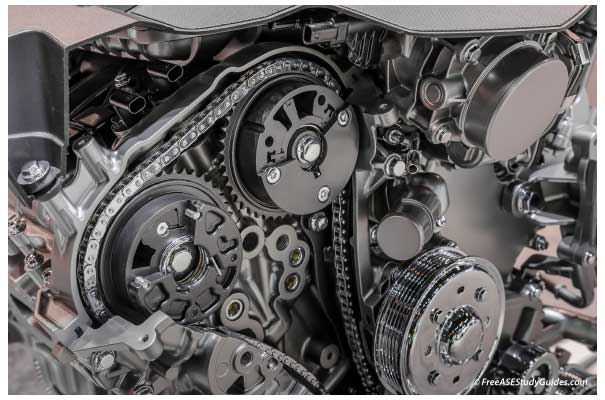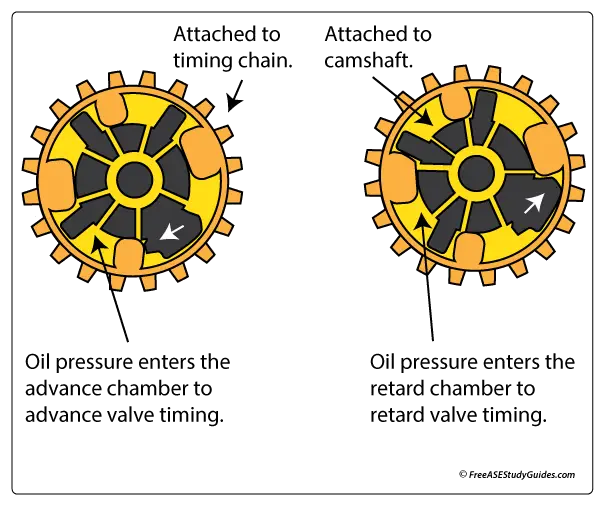Variable Valve Timing

(VVT) or variable valve timing adjusts valve timing to meet operating conditions. The easiest and most common method advances and retards valve timing but does not alter valve lift. Newer, more efficient systems also change valve lift and duration.

The VVT actuator above advances and retards the timing. A computer-controlled solenoid operates an oil control valve. The valve directs fluid to the advance and retard chambers to control the opening and closing time of the valves.
The module advances valve timing as engine speeds increase, opening the intake valve sooner to improve airflow and engine performance. When the engine is shut down, a lock pin holds the actuator in its advanced position for easy starting. The control module uses input from the camshaft position sensor to ensure the camshaft is positioned correctly.